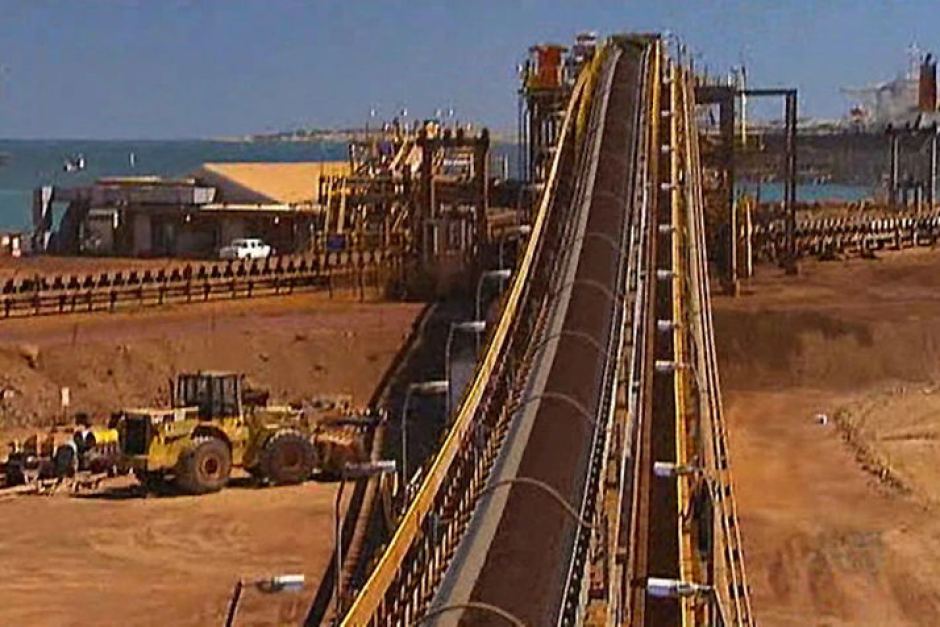Great Barrier Grief
For the past few years, Australia’s economy has largely avoided the downturn that other Western economies have experienced. Unemployment peaked at 5.7%, far below the US peak of 10.2% and less than half of the Eurozone peak of 12.1%. Between 2004 and 2009, the economy grew at an average rate of 5.3%-- exceptionally strong growth for a developed economy. According to a 2011 Credit Suisse report, the Australians are the second wealthiest people in the world (after the Swiss), with an average net worth of $397,000, four times what it was in 2000. This boom is nothing new to Australians—the economy has been growing for twenty-two years straight. This is primarily the result of two factors. One is the structural reforms pursued since the 1980s; when Bob Hawke, the leader of the left-wing Labor Party, came into power in 1983, Australia was mired in a economic malaise. Its GDP per capita, 5th highest in the world in 1950, had fallen to 9th by 1973 and 5th by the mid-1980s. The cause for this slump was four fold: low rates of innovation and technological advancement; strong, politically influential labour unions and inefficient working practices; an uncompetitive and heavily subsidised manufacturing sector that focused mainly on the domestic market; and the high cost of infrastructure and utilities.
Despite his background, having served as the president of the country's largest federation of labor unions, the ACTU, Hawke, and his successor Paul Keating, adopted a dramatic programme of economic liberalisation that rivalled Margaret Thatcher's reforms in their comprehensiveness and presaged the policies of center-left "Third Way" leaders like Tony Blair and Bill Clinton. Winning five successive elections, the two Labor governments responded to the economy's stagnation by slashing tariffs, floating the Australian dollar, and loosening exchange and interest rate controls. Key industries, such as Telstra (the national telecoms company) and Qantas (the national airline) were privatised.
The results were gradual, but appreciable by any standard. By opening the economy up to competition, Australia’s economy itself became more competitive and efficient. Investment in research and development rose substantially. Productivity growth was the second highest in the OECD. While labour intensive manufacturing activity in fields such as textiles fell by 40% between 1985 and 2004, the overall sector grew by the same amount. GDP per capita rose to the 8th ranking by 2002.
The role of this sweeping program of reforms, however, has played a back seat to that of the burgeoning commodities sector, and for good reason. More than half of all of Australia’s exports, 55.7% in 2011, are commodities, an unusually high percentage for an advanced economy. As that share has grown (it was 48.7% in 2009), so has the country’s economy—half of all GDP growth since 2004 is attributable to the commodities sector. Australia is the world’s largest exporter of iron ore and coal, the second largest producer of gold, and ranks in the top ten for a bevy of minerals, including alumina, bauxite, copper, cobalt, manganese, nickel, uranium, tin and zinc.
It should not be surprising, then, to see who these minerals are going to: China, which now accounts for over 44% of Australian commodity exports. Since 2005, China has invested $51 billion in non-financial assets. Australia has profited substantially from China’s boom.
But this boom has come with its downsides. The Australian dollar has risen by 230% against the US Dollar since its low in April of 2001 of $0.47 to its peak in June 2011 of $1.10. This has meant a dramatic increase in Australians’ purchasing power. But it has also spelt disaster for its manufacturers. Manufacturing has declined for twenty-five months straight, and investment in the sector has nearly halved from 1.5% in 2003 to 0.75%. Ford Australia recently announced that it would be ceasing operations there. The country’s main domestic car manufacturer, Holden, a GM subsidiary, warned that it too could cease production without government aid.
And now, it seems the commodities-fuelled boom is coming to an end. Prices of the minerals Australia exports have fallen substantially, with iron ore falling 21%. Unemployment has reached its 2009 peak of 5.7%, and is expected to reach 6.25% by the middle of next year, according to government estimates. Some economists expect an even higher rise of up to 6.5%. With major gas projects expected to be completed in 2015, some analysts fear an “investment cliff” that would squeeze the economy further. The reason for this is same as its boom: the Chinese economy, this time a slowing one. If the Chinese economy were to drop sharply, from 7.5% growth to 5% growth, the unemployment could skyrocket to 10%, the economy would contract by 1%, and housing prices would fall by 25%. According to Standard and Poor’s, this is considered highly unlikely- they assign it a mere 5% chance of occurring. But one thing is clear—the boom days are over.
This is bad news for Tony Abbott, who recently defeated Kevin Rudd in a battle for the premiership. Investors have pledged that they will deepen investments in the economy after the results are known and the political situation stabilises: it was Rudd’s second term as Prime Minister, after being elected in 2007 he was overthrown in a palace coup by his deputy, Julia Gillard, from whom he regained the job in June as polls indicated a landslide loss for his Labor Party. However, the appreciable recovery was not enough, and the Liberal Abbott was swept into power in a decisive victory. But it is clear that winning was the easy part.


